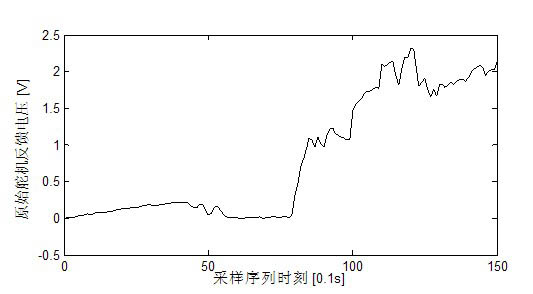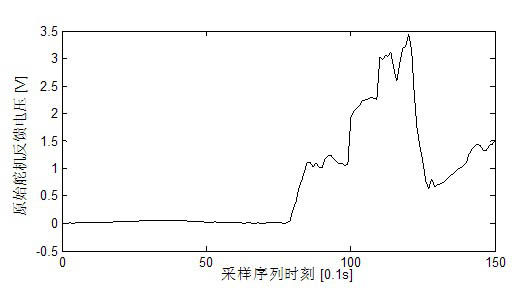Equipment or system built-in test signal false-alarm filtering method based on empirical mode decomposition
An empirical mode decomposition and test signal technology, applied in complex mathematical operations, ships, ship parts, etc., can solve the problem of test signal filtering and eliminate false alarm signals, and achieve the effect of filtering false alarm signals
- Summary
- Abstract
- Description
- Claims
- Application Information
AI Technical Summary
Problems solved by technology
Method used
Image
Examples
specific Embodiment approach 1
[0015] Specific implementation mode one: the following combination Figure 1 to Figure 2 This embodiment will be described.
[0016] Since the data processed by BIT is often non-stationary and nonlinear, we consider using Empirical Mode Decomposition (EMD), which has expertise in data processing in this area, to assist in filtering the BIT signal, thereby reducing the false alarm rate. the goal of.
[0017] EMD is an important constituent step of the Hilbert-Huang Transform (HHT), which was published by Dr. E Huang of the National Aeronautics and Space Administration (National Aeronautics and Space Administration, NASA) in 1998. Different from the traditional method that uses a fixed shape window as the boundary basis function, the basis function of EMD is an intrinsic mode function (IntrinsicModeFunction, IMF) extracted adaptively from the signal. It uses the change of the internal time scale of the signal to analyze the energy and frequency, and expands the signal into se...
specific Embodiment approach 2
[0055] Embodiment 2. The difference between this embodiment and Embodiment 1 is that T=0.25, and the others are the same as Embodiment 1.
specific Embodiment approach 3
[0056] Specific implementation mode three: the following combination Figure 3 to Figure 20 Describe this embodiment, give a specific example, unmanned aerial vehicle is a kind of unmanned aerial vehicle, has lifting surface, can rely on autopilot and radio system control and do maneuver flight, it can complete aerial environment monitoring, forest Fire prevention, pesticide spraying, aerial reconnaissance and other tasks. In this embodiment, the signal is intercepted from the steering gear feedback voltage signal when the UAV performs a specified self-inspection task, and a section of original sampling data is selected respectively in the case of no fault and fault, as shown in image 3 with Figure 4 shown. from image 3 As shown in the no-fault situation, it can be seen that after the servo performs the self-inspection action, the voltage rises and tends to be stable, but due to its own disturbance and other reasons, there are many large-scale drops in the second half, w...
PUM
 Login to View More
Login to View More Abstract
Description
Claims
Application Information
 Login to View More
Login to View More - R&D
- Intellectual Property
- Life Sciences
- Materials
- Tech Scout
- Unparalleled Data Quality
- Higher Quality Content
- 60% Fewer Hallucinations
Browse by: Latest US Patents, China's latest patents, Technical Efficacy Thesaurus, Application Domain, Technology Topic, Popular Technical Reports.
© 2025 PatSnap. All rights reserved.Legal|Privacy policy|Modern Slavery Act Transparency Statement|Sitemap|About US| Contact US: help@patsnap.com



